Souvenirs, the Úbeda and Baeza Edition
With tips from an art historian whose family history in Úbeda stretches back more than 12 generations
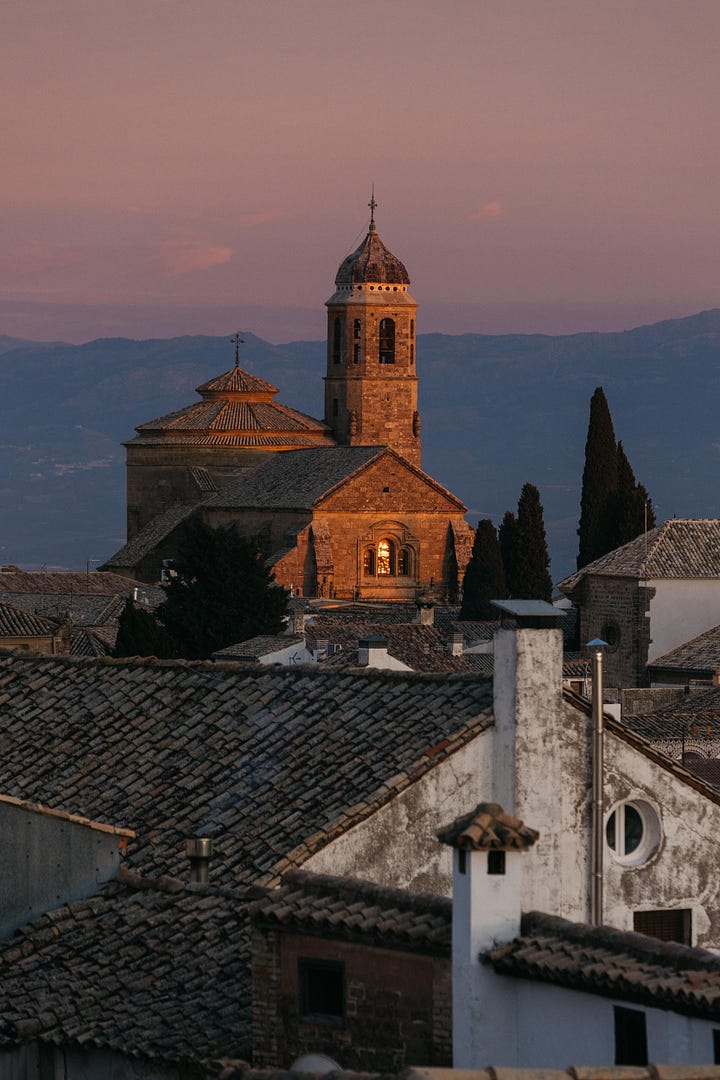
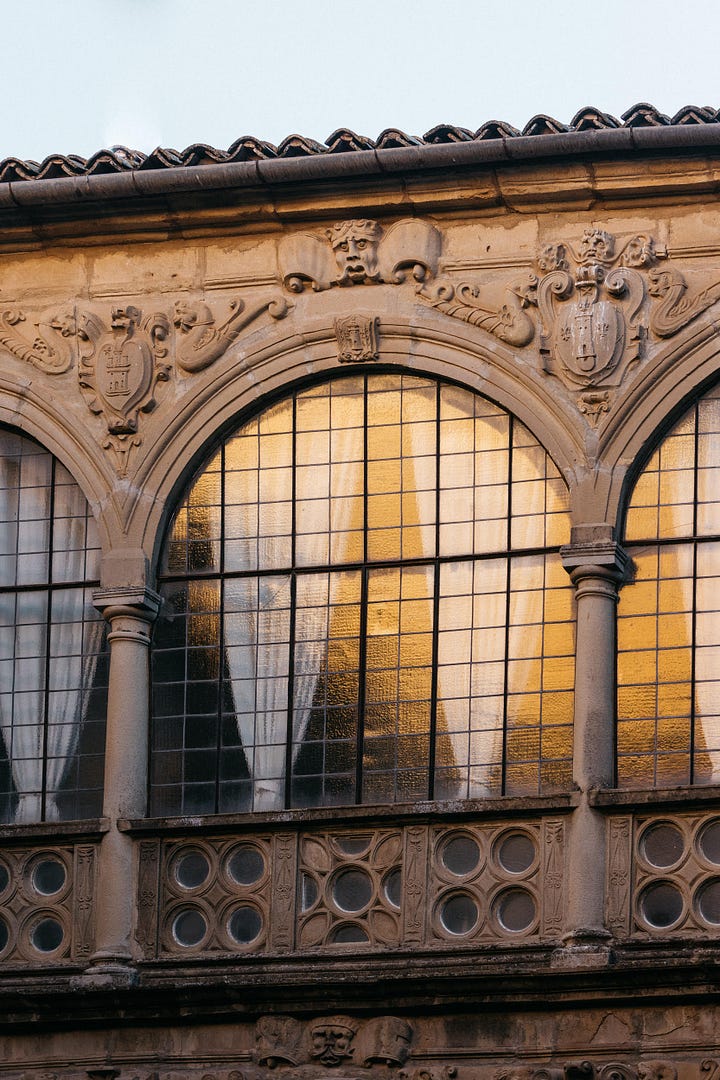
It’s been raining for the last three weeks in Barcelona (and most of Spain), but I’ve barely noticed—life has been so go-go-go that I’ve hardly had a minute to stop and look up. We’re in the thick of apartment renovations, I’m midway through my semester of teaching at the Institute for American Universities, and, excitingly, I just started a part-time job with the Homo Faber Guide, where I’ll be scouting and profiling artisans in Spain and beyond.
Amid the whirlwind of deadlines and to-do lists, I carved out a brief escape to Nerja two weeks ago to visit my mom, who’s spending a month there this winter. We wandered the beaches, stopped for coffee and pastries at Nybakat, and, when the skies cleared, hiked up to Frigiliana—one of Andalucía’s prettiest pueblos blancos—where we strolled its vertiginous streets and had a fabulous lunch at the North African resto La Tapería. I’m still thinking about their homemade flatbread, served with a tangy, chili-laced oil I’ve been trying to recreate in Barcelona ever since. After, we took in the sun from the rooftop terrace at La Tahona, with sweeping views of the terracotta rooftops and terraced green hills.

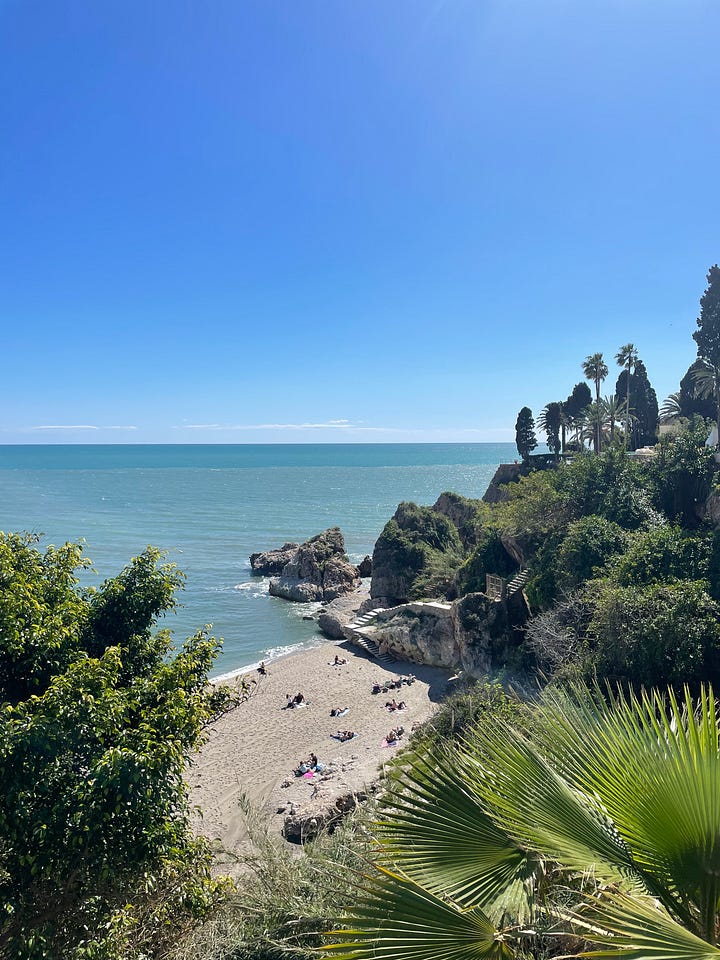
But the highlight of the getaway was undoubtedly our road trip to the UNESCO-listed cities of Úbeda and Baeza, about a 2.5-hour drive from Nerja. I’ve written about these towns before—prized for their 16th-century Renaissance architecture and perfectly preserved historic centers—but seeing them in person was something else entirely. Particularly Úbeda, which I’ll be focusing on in this newsletter, since we spent more time there, and it had a livelier atmosphere and a more varied mix of sights than Baeza.
If you visit these towns, call dibs on the passenger seat, because the drive in will have you craning your neck to take in views of the snow-dusted Sierra Nevada and thousands of acres of olive groves, unfurling across the landscape and climbing the mountainsides. Had we not been so eager to reach Úbeda before sunset, I would’ve stopped for a tour and tasting at one of the many olive farms along the way.
Instead, we took a quick detour to Montefrío, a sleepy whitewashed town near Granada, nestled in the shadow of a dramatic rocky ridge where a castle complex once stood during Muslim rule. The town is also known for its massive neoclassical Iglesia Mayor de la Encarnación, modeled after the Pantheon in Rome. It was siesta hour when we arrived, so the plazas were empty and the persianas were all drawn, but it was still nice to stretch our legs and get some air.
A few hours later, we arrived in Úbeda just in time to park the car and do a quick zip through town before sunset. We squeezed past a group of nuns outside the Real Monasterio de Santa Clara and made a beeline for Plaza Vázquez de Molina, considered Spain’s most important Renaissance square and one of the most remarkable in Europe.
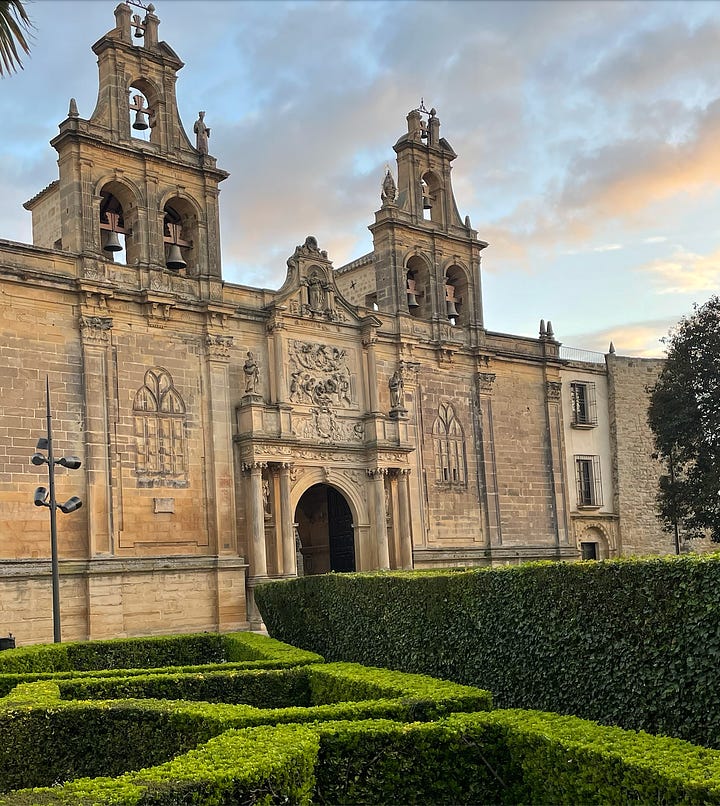

Standing in the plaza, my mom and I gazed up at the magnificent Sacra Capilla del Salvador, marveling at its intricate Plateresque façade (from the Spanish plateresco, meaning "in the manner of a silversmith"). At that hour, it almost shimmered gold in the orange-pink light. Next door is the Palacio del Deán Ortega, housing one of Spain’s oldest parador hotels (from €120/night), its stunning Renaissance façade opening onto an interior courtyard with a double gallery and Renaissance-Nasrid columns. But it’s hard to know where to look, really, because on the far side of the plaza, manicured gardens and a Renaissance fountain front the Palacio Vázquez de Molina and the Basilica of Santa María de los Reales Alcázares. It’s all just breathtakingly beautiful, framed against the backdrop of the olive-blanketed hills of the Guadalquivir Valley.
For months, I’d been dreaming of staying at the Palacio de la Rambla (from €110/night), an eight-room hotel set in a Renaissance palace designed by Úbeda’s most famous architect, Andrés de Vandelvira. I’d seen photos of the property by Spanish photographer Paco Marín on IG and was blown away by its history and painterly, patinaed beauty—very World of Interiors, if you know what I mean.
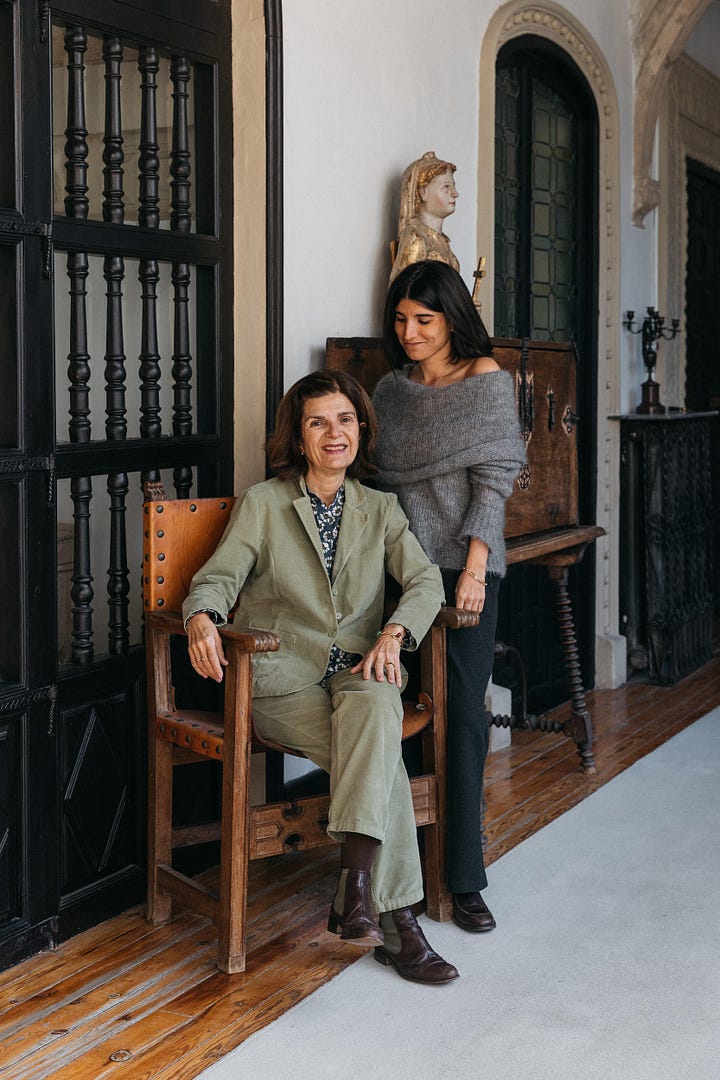
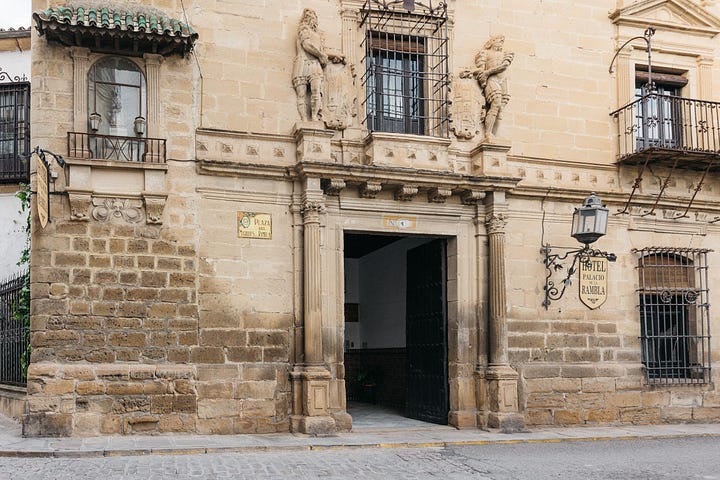
The property’s keeper, Rosa, led us through the interior courtyard, pointing out the on-site chapel and moody salon while weaving in bits of history—like how, in 1926, the palace hosted a royal lunch for King Alfonso XIII (captured in this video). She explained that the property has been in the same Madrid-based family for more than 12 generations, and in the ’90s, the current owner, Elena Meneses de Orozco, transformed it into a hotel. Today, her daughter, Cristina Ponce de León Meneses, an art historian who works at Madrid’s Fundación Juan March, oversees its communication. Cristina and I later connected on Instagram, and she generously shared insights on the property—where she returns often, especially for holidays such as Semana Santa—along with a few local tips, which I’ve sprinkled throughout this article.
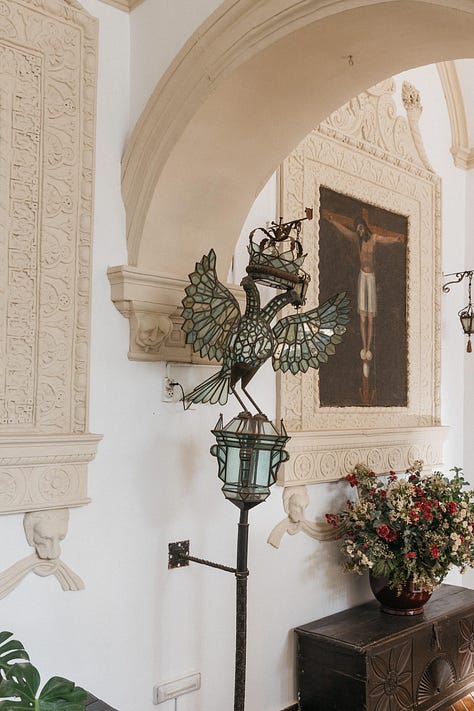

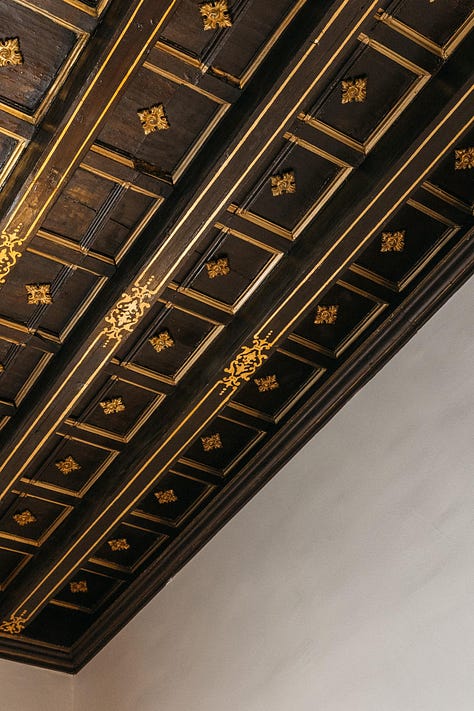
After checking in, Rosa handed me a long, old-school key and led me to my bright, high-ceilinged room. The space had its quirks, as you’d expect from a place this old, but I fell asleep that night swaddled in the softest embroidered cotton sheets (handmade in Portugal by a brand Cristina’s grandmother discovered a century ago) while getting lost in the magnificent wood ceilings overhead.
The next day, we set out to discover Úbeda’s legendary craft scene. We visited the sixth-generation workshop of Ubedíes Artesanía, where brothers Pedro and Jesús Blanco Ubalda carry on their family’s esparto grass weaving tradition. (You can book a hands-on workshop with them via the Homo Faber platform.) Their braided creations—ranging from footwear and wall hangings to rugs and animal-shaped figures—have been featured in collaborations with the Loewe Foundation and fashion designer Leandro Cano, and they’re often commissioned for Netflix productions.
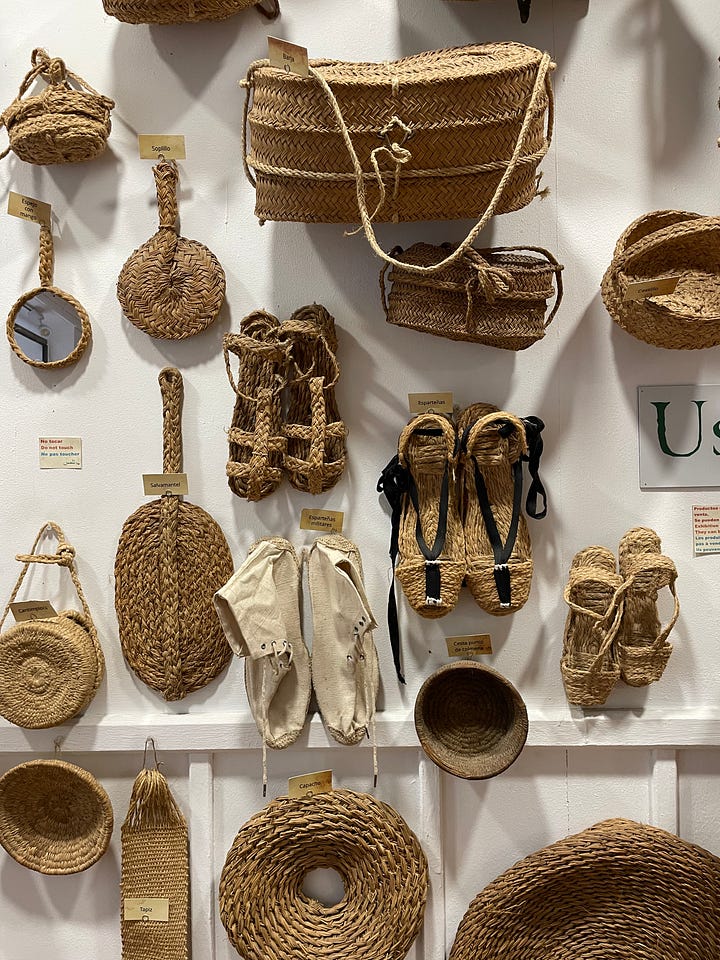
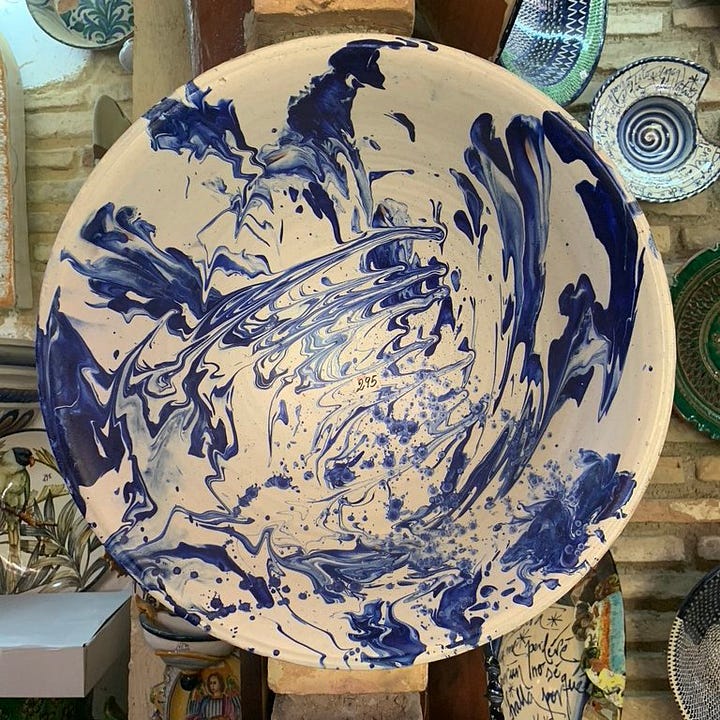
On the way to our next stop, the legendary ceramic workshop Alfarería Tito, we passed dozens of small grocers and specialty food stores selling local olive oil, anise-flavored borrachuelos pastries, and paprika-dusted ochíos de Úbeda bread, often stuffed with morcilla or picadillo de chorizo. Cristina recommends going straight to the source of the region’s finest EVOO at Castillo de Canena, a family-owned olive estate near Úbeda that offers visits on a per-appointment basis.
At Tito, we were welcomed by third-generation owner, Juan Pablo Martínez Muñoz, who led us through their museum-like workshop and explained how they fire Ubetense ceramics (a pottery-making tradition dating more than 6,000 years) in Spain’s last functioning Arab kilns. The workshop has won two National Crafts Award (2006 and 2012) and has crafted pieces for the Spanish Royal Family, as well as homegrown fashion brands like Moisés Nieto.
With the region’s layered history and its status as the world’s largest olive oil producer, it’s no surprise that Úbeda’s food scene is top-notch. In recent years, high-end restaurants like Cibus have emerged, spotlighting regional ingredients and dishes such as andrajos, a rustic stew with dumplings and wild game. Cristina recommends the casual El Navarrao and the more upscale el Antique.
We were glad to have saved our appetites for Baeza, about 10 kilometers away, where we worked up quite a hunger after strolling through the town’s compact yet stunning casco antiguo, where masterpieces include the Gothic-Isabelline Palacio de Jabalquinto, the picturesque Plaza del Pópulo, and the grand Baeza Cathedral. Baeza has a quieter, more medieval feel than Úbeda, with almost an erudite character (perhaps because of its historic university?).


For lunch, we considered splurging on Vandelvira Restaurante (one of Cristina’s recommendations), a Michelin-starred spot occupying a 16th-century monastery with covered cloisters. The young chef-owner, Juan Carlos García, is known for his inventive takes on humble local ingredients—many sourced in his own garden—such as persimmons and chamomile. Instead, we opted for a more casual yet delicious lunch at Taberna el Pájaro, where the must-order dishes are fried artichokes and lomo a la orza (pork loin slow-cooked in olive oil with garlic and spices, then preserved in a clay orza).
As we drove out of Baeza, the late afternoon light stretched long over the olive groves — a sea of silvery-green, broken only by the occasional whitewashed farmhouse or crumbling stone wall. Had I spoken to Cristina beforehand, I’d have followed her advice and tacked on an excursion to the Sierra de Cazorla, Segura y las Villas Natural Park, the largest protected area in Spain, home to meandering river trails, the stunning Pico Cabañas mountain, and pretty towns like Cazorla. Somehow, though, I know it won’t be the last time I come this way.





Dibs on your mom's rental -- sounds like a brilliant move. Your writing always plunks me right down where I wish I was ;)
Thanks for sharing this 🧡 We are planning an Andalucía roadtrip this fall and some of these spots are new to me!